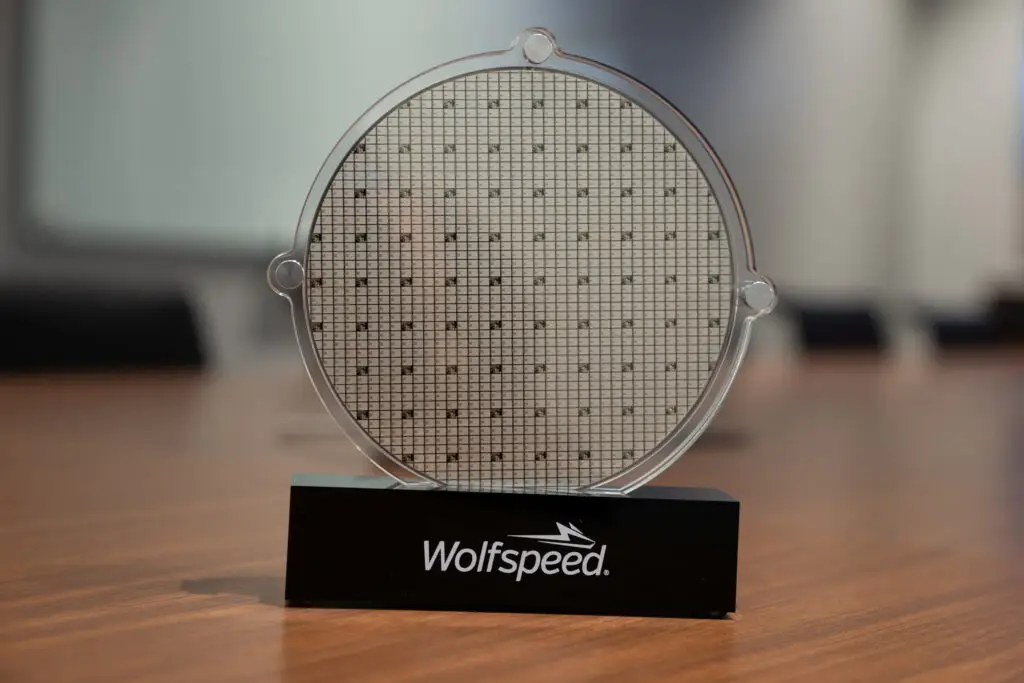Wolfspeed Inc., a once high-flying U.S. semiconductor company known for its silicon carbide technology, is preparing to file for bankruptcy protection within weeks after months of failed out-of-court negotiations with creditors, according to people familiar with the matter.
The Durham, North Carolina-based chipmaker is working with legal and financial advisers on a prepackaged Chapter 11 filing, a move that would allow the company to continue operating while restructuring more than $2.1 billion in debt. The filing could come as early as mid-June, barring a last-minute breakthrough with lenders, sources said.
The company’s preparations mark a dramatic turn for a business that had been central to the U.S. push for domestic semiconductor manufacturing, especially in the high-voltage components needed for electric vehicles, data centers, and renewable energy systems.
Creditors, led by Apollo Global Management and BlackRock, have made several attempts over the past two months to restructure Wolfspeed’s debt out of court, including debt-for-equity swaps and maturity extensions, but those efforts were rejected by the company’s board, sources said.
Instead, Wolfspeed is pursuing a prepackaged bankruptcy that would allow it to eliminate a large portion of its unsecured debt while preserving day-to-day operations and shielding critical assets like its Mohawk Valley chip fabrication facility in upstate New York.
“Wolfspeed believes a court-supervised process is the most efficient path forward to stabilize its capital structure and protect its long-term strategic goals,” a person familiar with the matter said.
The company has reportedly secured debtor-in-possession (DIP) financing from existing lenders, which would provide short-term liquidity during the restructuring process.
Wolfspeed, formerly known as Cree Inc., had been riding a wave of enthusiasm for its silicon carbide semiconductors, which enable more efficient power conversion in EVs and industrial applications. The company signed supply deals with Tesla, General Motors, and other automakers, and received over $1.2 billion in federal and state incentives to expand U.S. production.
But aggressive expansion, cost overruns at its Mohawk Valley facility, and global supply chain disruptions have strained its finances. Wolfspeed burned through $800 million in free cash flow in fiscal 2024, and recent earnings showed declining gross margins and ballooning losses.
As of March 31, Wolfspeed reported $280 million in cash and $2.1 billion in total debt, including $1.3 billion in convertible notes and $600 million in term loans maturing in 2026.
The company’s bonds trade at deeply distressed levels, with some notes quoted at below 40 cents on the dollar, signaling widespread investor skepticism about recovery prospects.
A Wolfspeed bankruptcy could reverberate beyond Wall Street. The company was a flagship recipient of U.S. CHIPS Act incentives, touted by the Biden administration as part of efforts to reduce reliance on Chinese suppliers and on traditional silicon-based chips.
The Department of Commerce awarded Wolfspeed a $500 million grant in 2023, and New York State pledged nearly $750 million in subsidies to support its factory expansion. A bankruptcy could trigger clawback provisions or lead to political scrutiny of how CHIPS Act funds were deployed.
“This would be a blow to U.S. semiconductor reshoring ambitions,” said Stacy Rasgon, chip analyst at Bernstein Research. “Wolfspeed was seen as a homegrown solution to China’s dominance in power semiconductors.”
News of the pending filing sent Wolfspeed shares down nearly 22% in after-hours trading, wiping out more than $400 million in market capitalization. The stock, which traded above $130 in 2021, closed Monday at $14.35 and is now down over 85% year-to-date.
The news also weighed on shares of other silicon carbide suppliers, including ON Semiconductor and STMicroelectronics, though both companies have broader product lines and more diversified customer bases.
Private equity firms and strategic buyers have reportedly expressed interest in acquiring parts of Wolfspeed’s operations in bankruptcy, including its device packaging business and legacy LED lighting unit.
Wolfspeed is expected to file its Chapter 11 plan in the U.S. Bankruptcy Court for the District of Delaware. The plan will likely include a debt-to-equity conversion that hands control of the company to its senior lenders, while wiping out existing equity holders.
The filing could also prompt labor negotiations and contract revisions at its New York plant, which employs more than 900 workers.
Until then, Wolfspeed continues to ship product and fulfill customer orders, though some automakers have reportedly begun diversifying their sourcing amid the uncertainty.
Wolfspeed’s pending bankruptcy underscores the risks of capital-intensive industrial bets in a volatile macroeconomic and geopolitical environment—even when backed by federal dollars.
Wolfspeed at a Glance
- Headquarters: Durham, NC
- Founded: 1987 (as Cree Inc.)
- Specialty: Silicon carbide semiconductors
- Debt Load: $2.1 billion
- Cash Reserves: $280 million (as of March 2025)
- Federal/State Subsidies: $1.2 billion+
- Planned Bankruptcy Filing: June 2025 (expected)
- Key Customers: Tesla, GM, Lucid Motors






